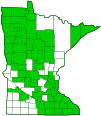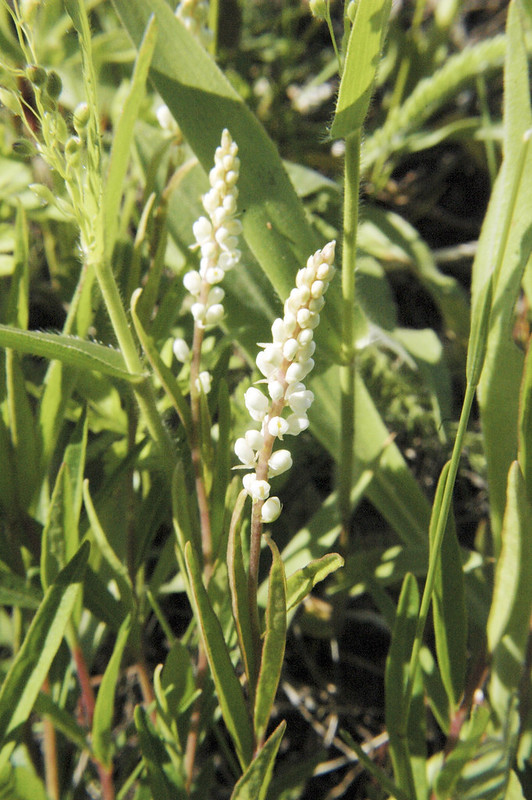Seneca snakeroot
(Polygala senega)
Conservation • Wetland • Description • Habitat • Ecology • Use • Distribution • Taxonomy
Description |
||
Seneca snakeroot is a common small wildflower. It occurs in the eastern United States and across Canada. In Minnesota it occurs in the northwest, central, and southeast regions and is mostly absent from the northeast and southwest regions. It is found in woodlands and prairies, on lake shores and river banks, along railroads and roadsides, and in other disturbed sites. It grows under full or partial sun in dry or moderately moist, loamy or rocky, often limey (calcareous) soil. Seneca snakeroot is a 4″ to 20″ tall, erect or curved up from the base, perennial forb that rises on several stems from a taproot and fibrous roots. The taproot is dark brown, twisted, up to 5⅞″ (15 cm) long, and up to ½″ wide. It is somewhat woody and often purplish toward the top. The rootstock spreads horizontally and usually has a cluster of several to many stems rising from it. The stems are erect, round, unbranched, yellowish- or whitish-green, and often reddish-purple near the base. They are moderately to densely covered with inconspicuous, minute, curved hairs, at least toward the top. The leaves are alternate, ⅝″ to 2¾″ (15 to 70 mm) long, and ⅛″ to 1⅜″ (4 to 35 mm) wide. They are on short, 1⁄16″to ⅛″ (2 to 3 mm) long leaf stalks. The leaf blades are narrowly lance-shaped, narrowly egg-shaped, or narrowly oval and widest in the middle (elliptic). The upper and lower surfaces are mostly hairless but may have a very few scattered hairs. The margins have minute, sharp, closely-spaced, forward pointing teeth. The inflorescence is a dense, spike-like, ⅝″ to 2″ (1.5 to 5 cm) long, unbranched cluster (raceme) at the end of each stem. The central axis of the raceme is covered with minute hairs. The flowers bloom from the bottom to the top. The flowers are about ⅛″ wide. There are 5 outer floral leaves (sepals), 3 petals, 8 stamens, and 1 style. The upper sepal and lower pair of sepals are small and whitish-green. The lateral pair of sepals, referred to as wings, are petal-like, white, elliptic to nearly circular, and much larger, ⅛″ (3.0 to 3.7 mm) long. They are cupped, completely enclosing the corolla at first, then spreading widely as the flower matures. The petals are fused into a white, hairless, ⅛″ (2 to 3 mm) long tube. The lower petal (appearing central and referred to as the keel) is often fringed at the tip. The stamens have yellow anthers. The stalks of the stamens (filaments) are fused together. The style has 2 lobes near the tip. The upper lobe has a cap-like stigma. The lower lobe is sterile and has a fringe of hairs. The fruit is a 1⁄16″to ⅛″ (2.5 to 4.2 mm) long, almost orb-shaped capsule. It is somewhat flattened and shallowly notched at the tip. |
||
Height |
||
4″ to 20″ |
||
Flower Color |
||
White |
||
Similar Species |
||
Habitat |
||
Dry to moist. Woodlands, prairies, lake shores, river banks, railroads, roadsides and other disturbed sites. Full or partial sun. Loamy or rocky, often calcareous soil. |
||
Ecology |
||
Flowering |
||
May to June |
||
Pests and Diseases |
||
|
||
Use |
||
|
||
Distribution |
||||
|
Sources |
|||
| 6/11/2023 | ||||
Nativity |
||||
Native |
||||
Occurrence |
||||
Common |
||||
Taxonomy |
|||
| Kingdom | Plantae (Plants) | ||
| Division | Tracheophyta (Vascular Plants) | ||
| Subdivision | Spermatophytina (Seed Plants) | ||
| Class | Magnoliopsida (Dicots) | ||
Order |
Fabales (Legumes, Milkworts, and Allies) | ||
Family |
Polygalaceae (milkworts) | ||
| Tribe | Polygaleae | ||
Genus |
Polygala (milkworts) | ||
Subordinate Taxa |
|||
|
|||
Synonyms |
|||
Polygala senega var. latifolia Polygala senega var. senega |
|||
Common Names |
|||
Seneca snakeroot senega snakeroot senga-root sengaroot |
|||
Glossary
Ascending
Growing upward at an angle or curving upward from the base.
Corolla
A collective name for all of the petals of a flower.
Elliptic
Narrowly oval, broadest at the middle, narrower at both ends, with the ends being equal.
Filament
On plants: The thread-like stalk of a stamen which supports the anther. On Lepidoptera: One of a pair of long, thin, fleshy extensions extending from the thorax, and sometimes also from the abdomen, of a caterpillar.
Raceme
An unbranched, elongated inflorescence with stalked flowers. The flowers mature from the bottom up.
Sepal
An outer floral leaf, usually green but sometimes colored, at the base of a flower.
Visitor Photos |
|||||
Share your photo of this plant. |
|||||
| This button not working for you? Simply email us at info@MinnesotaSeasons.com. Attach one or more photos and, if you like, a caption. |
|||||
|
|||||
MinnesotaSeasons.com Photos |
|||||
Clustered stems rising from a single horizontally spreading rootstock |
|||||
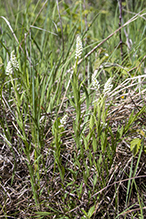 |
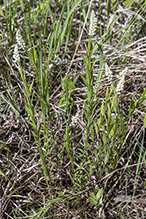 |
||||
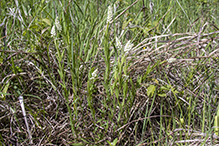 |
|||||
Single stem |
|||||
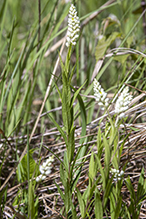 |
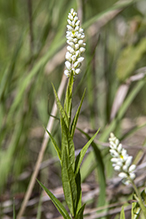 |
||||
Inflorescence |
|||||
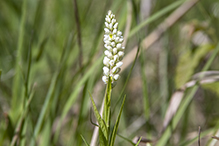 |
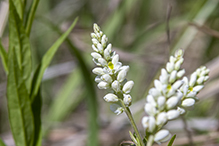 |
||||

Visitor Videos |
|||
Share your video of this plant. |
|||
| This button not working for you? Simply email us at info@MinnesotaSeasons.com. Attach a video, a YouTube link, or a cloud storage link. |
|||
Other Videos |
|||

Visitor Sightings |
|||||
Report a sighting of this plant. |
|||||
| This button not working for you? Simply email us at info@MinnesotaSeasons.com. Be sure to include a location. |
|||||
|
|||||
MinnesotaSeasons.com Sightings |
|||||

Created: 7/3/2020
Last Updated:
